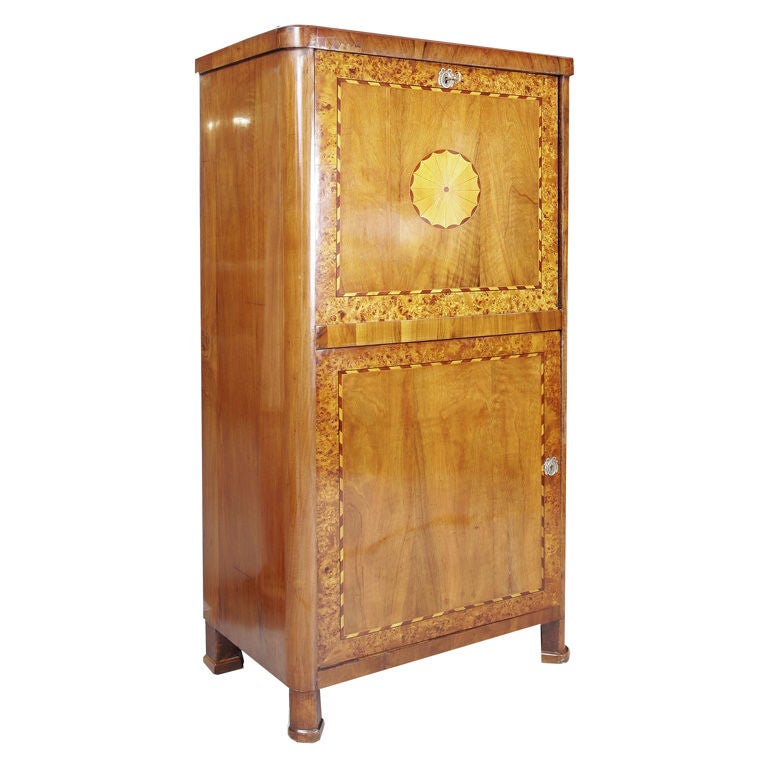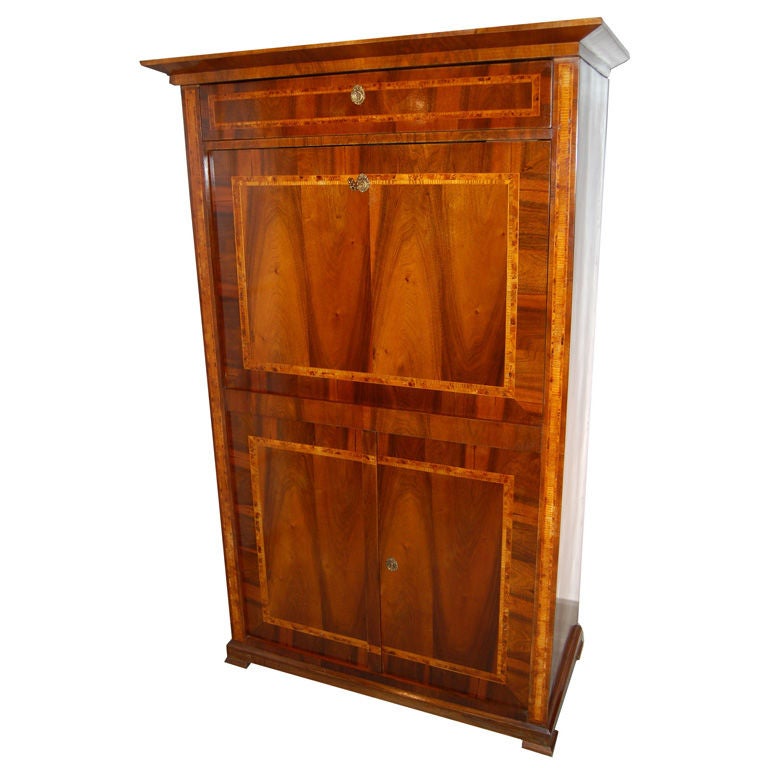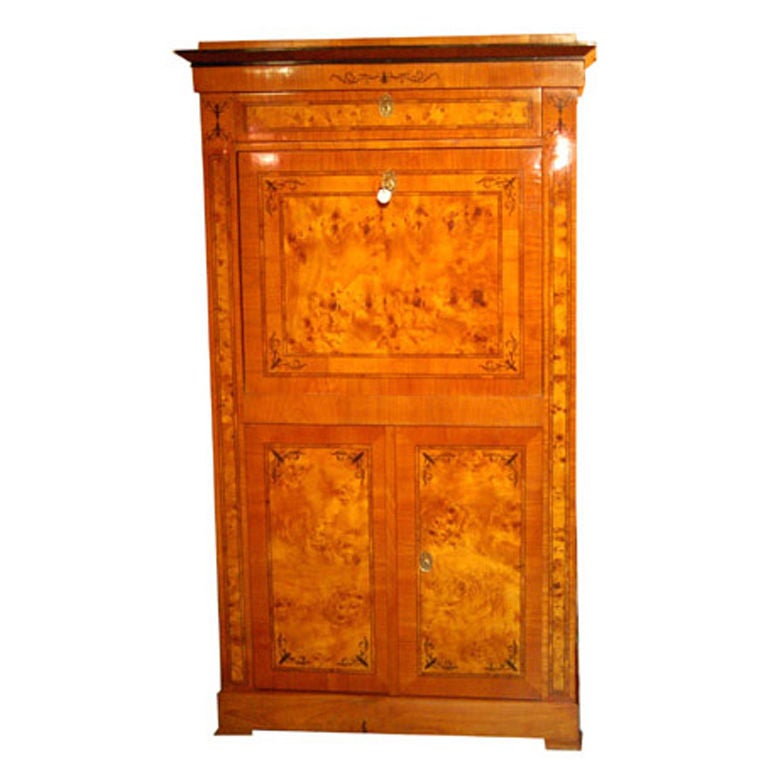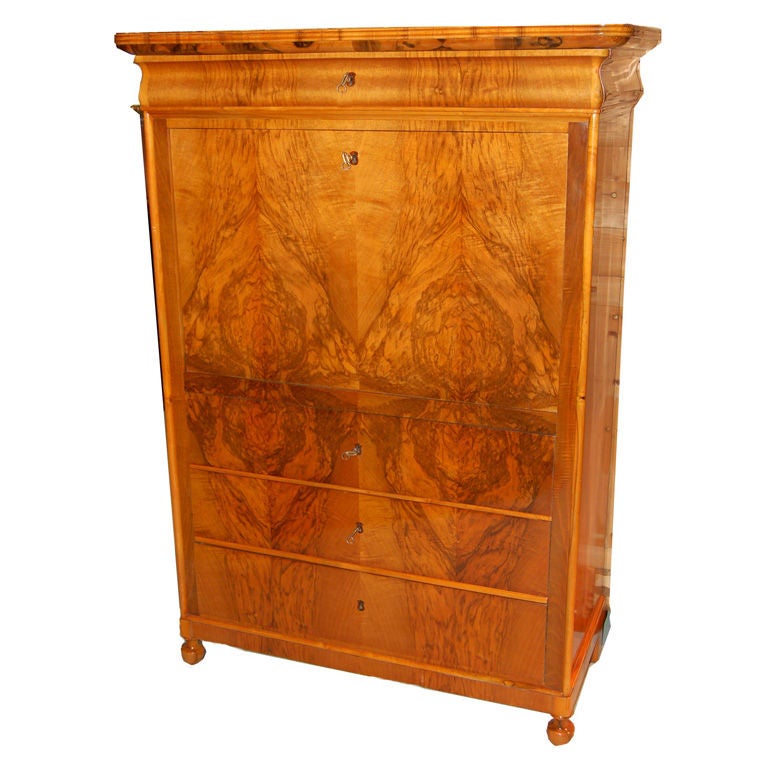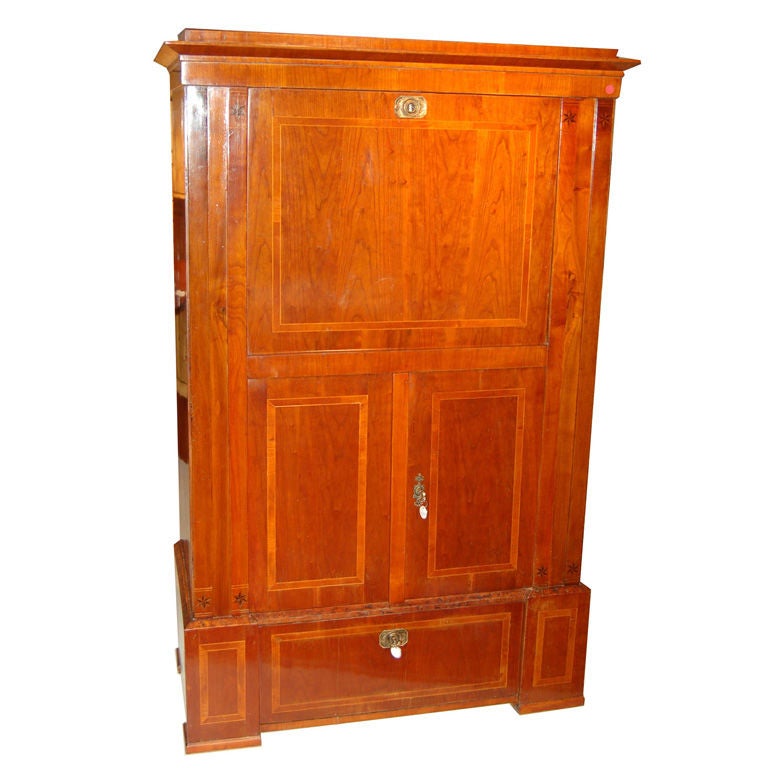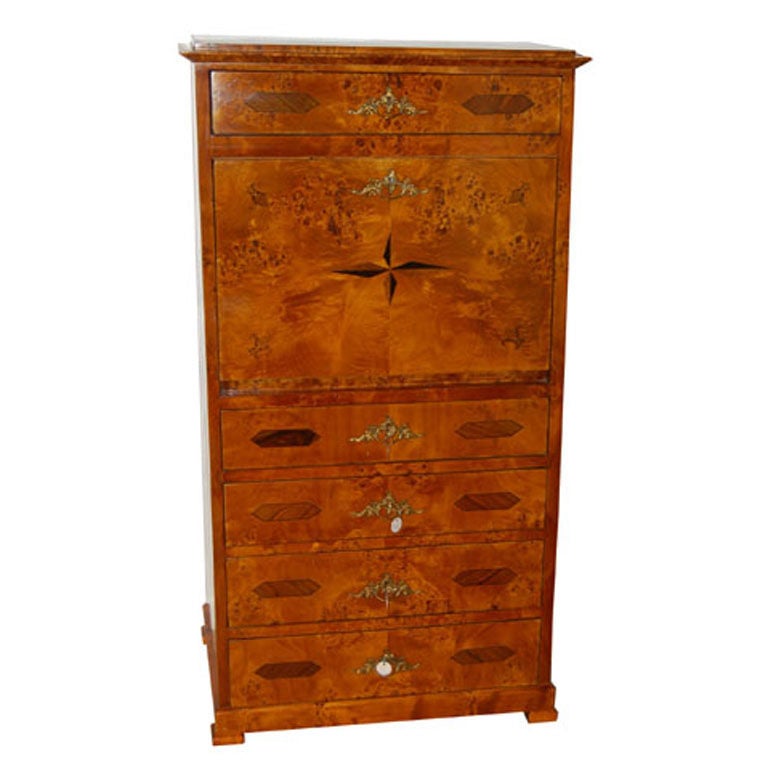Items Similar to Biedermeier Secretaire
Want more images or videos?
Request additional images or videos from the seller
1 of 7
Biedermeier Secretaire
About the Item
Biedermeier Secretaire with fall front writing surface, interior drawers and hidden compartments.
- Dimensions:Height: 64 in (162.56 cm)Width: 42 in (106.68 cm)Depth: 20 in (50.8 cm)
- Materials and Techniques:
- Period:
- Date of Manufacture:Circa 1820/30
- Condition:
- Seller Location:Pompano Beach, FL
- Reference Number:
About the Seller
5.0
Vetted Seller
These experienced sellers undergo a comprehensive evaluation by our team of in-house experts.
Established in 2004
1stDibs seller since 2009
66 sales on 1stDibs
Typical response time: 1 to 2 days
- ShippingRetrieving quote...Ships From: Pompano Beach, FL
- Return PolicyThis item cannot be returned.
More From This SellerView All
- Biedermeier SecretaireLocated in Pompano Beach, FLBiedermeier secretaire in walnut, root wood and ebony with fall-front writing surface; interior drawers and secret compartments.Category
Antique 19th Century Austrian Secretaires
MaterialsEbony, Walnut
- Biedermeier SecretaireLocated in Pompano Beach, FLBiedermeier Secretaire made of walnut, root wood and ebonized wood with fall-front writing surface, interior drawers and secret compartments.Category
Antique 19th Century Secretaires
MaterialsWood
- Biedermeier SecretaireLocated in Pompano Beach, FLBiedermeier secretaire made of walnut, root wood and ebony with a fall front writing surface, interior drawers and secret compartments.Category
Antique 19th Century Secretaires
- Biedermeier SecretaireLocated in Pompano Beach, FLBiedermeier secretaire made of walnut and cherry with fall front writing surface, nine interior drawers, mirrored cubby hole and three exterior drawers. Germany circa 1840.Category
Antique 19th Century Secretaires
MaterialsCherry, Walnut
- Biedermeier SecretaireLocated in Pompano Beach, FLBiedermeier Secretaire made of walnut, mahogany, ebony, intarsia. There are 2 doors, 2 drawers, 2 glazed doors, shelves with secret compartments.Category
Antique 19th Century Secretaires
MaterialsEbony, Mahogany
- Biedermeier SecretaireLocated in Pompano Beach, FLBiedermeier secretaire made of walnut, rootwood and ebonized wood. It has a fall front writing surface with interior drawers and a cubby hole. Lower section with exterior drawers.Category
Antique 19th Century Secretaires
MaterialsWood
You May Also Like
- 19th Century Biedermeier Walnut Secretaire. Austria, c. 1825-30.Located in Vienna, ATHello, This elegant and early Austrian Biedermeier secretaire was made circa 1825-30. The Secretaire is an example of beautiful, rare ...Category
Antique Early 19th Century Austrian Biedermeier Secretaires
MaterialsBrass
- Biedermeier Writing Desk Chiffonier Secrétaire Cabinet Swedish Ormolu DetailLocated in LONDON, GBSwedish antique Biedermeier writing desk chiffonier secrétaire cabinet in highly quilted golden birch veneers and finished in the Classic light h...Category
Antique Late 19th Century Swedish Biedermeier Secretaires
MaterialsBirch
- Biedermeier SecretaireLocated in New York, NYA strong, elegant piece to keep you perfectly organized! Crafted of hand-hewn fir and ash and veneered with thick hand-cut ash veneers, this chest offers storage for everything. A lo...Category
Antique 1850s Swedish Biedermeier Secretaires
MaterialsAsh
- Russian Neoclassic Mahogany SecretaireLocated in New York, NYRussian Neoclassic (Late 18th/ Early 19th Century) ormolu mounted ebonized and mahogany secretaire cabinet with a Pair of doors above a fitted fall...Category
Antique Early 19th Century Russian Neoclassical Secretaires
MaterialsOrmolu
- English Regency Rosewood SecretaireLocated in New York, NYEnglish Regency rosewood secretaire cabinet with two upper shelves supported by a lyre form over a secretaire drawer fitted with a leather wri...Category
Antique Mid-19th Century English Regency Secretaires
MaterialsRosewood
- Birch Biedermeier SecretaireLocated in New York, NYConstructed of solid birch and fir and veneered with hand-cut Nordic birch veneers, the secretary features an upper locking drawer which rests upon a fitted desk area hiding behind a...Category
Antique 19th Century Swedish Biedermeier Secretaires
MaterialsBirch, Fir
Recently Viewed
View AllMore Ways To Browse
Hidden Compartment
Biedermeier Ebony
Biedermeier With Ebony
Biedermeier Writing Cabinet
Walnut Biedermeier Secretaire
Secretary With Glass
Antique Hidden Compartment Furniture
Glass Cabinet Secretary
19th Century Drop Front Cabinet
Bureau Secretaire
Antique Cubbies
American Secretary
Danish Secretary Cabinet
Modern Secretary Desk Cabinet
20th Century Secretary Desk
Secret Drawer Cabinet
Beautiful Antique Secretary
Antique Secretary Writing Desk
